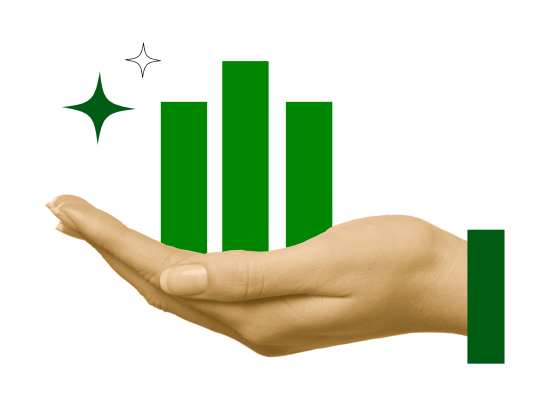With the U.S. Supreme Court striking down President Biden’s student loan forgiveness plan, millions of borrowers won’t be getting the financial break they’d been hoping for.
Under Biden’s executive order, borrowers would have seen up to $20,000 of their loan balance cancelled.
Payments on student loans will restart in October after a three-year pause and borrowers will have to contend with the burden of education debt. About 43 million borrowers now hold more than $1.6 trillion in student loan debt.
In June 2023, U.S. Credit Karma members with a student loan collectively owed an average of $30,090.
Read on for more findings, including a breakdown of student loan debt by generation, state and more.
Credit Karma Stat Snapshot
Average student loan debt by generation
Baby boomer and Generation X Credit Karma members hold the highest average student loan debt, while Generation Z has the least.
The average student loan debt carried by baby boomers and Gen Xers is nearly three times the average student loan debt carried by Gen Z borrowers.
| Generation | Average student loan debt |
|---|---|
| Baby boomer (born 1946–1964) | $43,185 |
| Generation X (born 1965–1980) | $40,125 |
| Silent generation (born 1928–1945) | $36,579 |
| Millennials (born 1981–1996) | $29,141 |
| Generation Z (born 1997–2012) | $15,883 |
States with the highest and lowest average student loan debt
Credit Karma members living in the District of Columbia have the highest average student loan debt at $44,393, followed by Maryland ($36,504) and Georgia ($33,960).
Members in Utah have the lowest average debt at $25,592, with those in Wyoming ($25,663), Idaho ($25,877), Iowa ($25,969) and Oklahoma ($25,998) close behind.
| State | Credit Karma members’ average student loan debt | Rank |
|---|---|---|
| Alabama | $30,695 | 16 |
| Alaska | $27,006 | 37 |
| Arizona | $27,921 | 30 |
| Arkansas | $26,784 | 40 |
| California | $30,357 | 19 |
| Colorado | $29,492 | 22 |
| Connecticut | $32,493 | 7 |
| Delaware | $31,970 | 11 |
| District of Columbia | $44,393 | 1 |
| Florida | $30,604 | 17 |
| Georgia | $33,960 | 3 |
| Hawaii | $29,364 | 23 |
| Idaho | $25,877 | 49 |
| Illinois | $32,442 | 9 |
| Indiana | $27,146 | 35 |
| Iowa | $25,969 | 48 |
| Kansas | $27,441 | 33 |
| Kentucky | $26,200 | 44 |
| Louisiana | $28,323 | 28 |
| Maine | $28,188 | 29 |
| Maryland | $36,504 | 2 |
| Massachusetts | $32,387 | 10 |
| Michigan | $29,663 | 20 |
| Minnesota | $29,074 | 24 |
| Mississippi | $31,042 | 14 |
| Missouri | $29,556 | 21 |
| Montana | $26,172 | 45 |
| Nebraska | $26,926 | 38 |
| Nevada | $26,009 | 46 |
| New Hampshire | $31,620 | 13 |
| New Jersey | $33,631 | 4 |
| New Mexico | $26,460 | 42 |
| New York | $33,546 | 5 |
| North Carolina | $30,494 | 18 |
| North Dakota | $27,029 | 36 |
| Ohio | $28,856 | 26 |
| Oklahoma | $25,998 | 47 |
| Oregon | $28,645 | 27 |
| Pennsylvania | $31,899 | 12 |
| Rhode Island | $27,714 | 31 |
| South Carolina | $30,913 | 15 |
| South Dakota | $27,358 | 34 |
| Tennessee | $29,001 | 25 |
| Texas | $26,792 | 39 |
| Utah | $25,592 | 51 |
| Vermont | $32,485 | 8 |
| Virginia | $33,061 | 6 |
| Washington | $27,643 | 32 |
| West Virginia | $26,468 | 41 |
| Wisconsin | $26,460 | 43 |
| Wyoming | $25,663 | 50 |
Average student loan debt by credit score
Credit Karma members with higher VantageScore 3.0 credit scores tend to have higher average student loan debt. Those with scores of 781 to 850 have the highest average debt —$32,916 — while those with scores of 300 to 600 average $27,105 in student loan debt.
| VantageScore 3.0 score band | Average total student loan debt | Average of next loan payment | Avg. account age (in months) |
|---|---|---|---|
| 300–600 | $27,105 | $25 | 349.3 |
| 601–660 | $29,025 | $30 | 361 |
| 661–780 | $32,203 | $52 | 348.1 |
| 781–850 | $32,916 | $109 | 380.8 |
Average student loan payment per month
The average next student loan payment for Credit Karma members is $44. The average next payment for baby boomers, who have an average debt of $43,185, is $87, while Gen X members, whose average total student loan debt isn’t too far behind at $40,125, have an average next payment of only $49.
Credit Karma members with student debt in the silent generation — who hold an average student loan debt of $36,579 — have the highest average next payment: $150. On the other end of the spectrum, Gen Z members have an average of $15,883 in total student loan debt and an average next payment of only $32.
Keep in mind that some of those who are holding education debt took out loans to help pay for their children’s or their grandchildren’s college tuition and are still paying them off. In the first quarter of 2023, 3.7 million Parent PLUS borrowers owed $107.6 billion, according to the National Student Loan Data System. And while grandparents are generally not eligible to take out Parent PLUS loans, they may be able to take out private student loans for their grandchildren.
Tips for managing student loan debt
If you’re facing economic hardship and may have trouble paying your loans, there are things you can do to find student loan debt relief. If most of your student loan debt is in federal loans, you tend to have a wider range of debt relief options.
Read on for some suggestions.
Income-driven loan repayment
Most federal student loans are eligible for one of the income-driven loan repayment plans, which may soon see some fundamental changes.
The four available plans adjust your monthly student loan payments based on your income and family size.
Proposed changes to these plans could cut some borrowers’ monthly payments in half while eliminating them altogether for others.
The Department of Education is proposing a rule to create a new income-driven repayment plan that would cap monthly payments for undergraduate loans at 5% of a person’s discretionary income instead of 10%. Borrowers with both undergraduate and graduate loans would pay a weighted average rate. Additionally, it would raise the amount of income that is considered non-discretionary.
The proposed rule would also forgive loan balances after 10 years of payments — instead of the current 20 years under many income-driven repayment plans — for borrowers with original loan balances of $12,000 or less.
Deferment or forbearance
Under certain circumstances, you may be able to defer your federal loans for up to three years. If you don’t qualify for deferment, you may be eligible for forbearance, which can postpone or reduce your payments for up to 12 months. Just keep in mind that with forbearance, interest continues to accrue while payments are paused. This means that your loan payments may be higher when forbearance ends.
Teacher loan forgiveness
If you’ve been a full-time teacher for five consecutive academic years in a low-income public elementary or secondary school or educational service agency, and you meet other qualifications, you may be eligible for teacher loan forgiveness of up to $17,500 on eligible federal student loans.
Learn more about the Teacher Loan Forgiveness Program to see if you qualify.
Public Service Loan Forgiveness
You may be eligible for loan forgiveness if you’re a full-time government employee or work for a qualifying nonprofit organization. If you qualify, you could get the remaining balance of your Direct Loans forgiven after making 120 qualifying payments.
To qualify, you must be employed by either government organizations at the federal, state, local or tribal level or nonprofit organizations that are tax-exempt under Section 501(c)(3) of the Internal Revenue Code.
If you’ve previously enrolled in an income-driven repayment plan, you can still apply for Public Service Loan Forgiveness to see whether your student loan debt can be forgiven in 10 years.
If you’re interested in learning more about PSLF and how it works, contact FedLoan Servicing at 855-265-4038.
Methodology
To determine averages across student debt, we analyzed in aggregate the accounts of more than 28 million U.S. Credit Karma members with student loan debt whose accounts have been updated in the last 36 months as of June 7, 2023. All aggregate data analyzed was pulled on June 7, 2023, and came from members’ TransUnion credit reports. For the purposes of this analysis, student loan debt is defined as any unpaid balance existing on members’ open student loans in aggregate at the time the data was pulled. All numbers in this report were rounded to the nearest whole.



